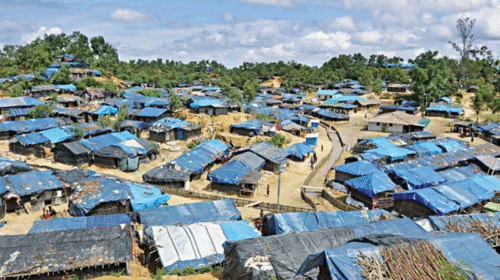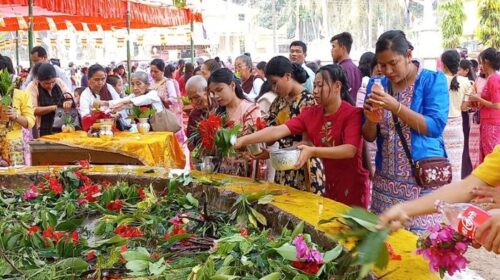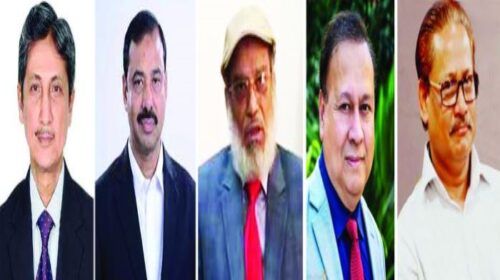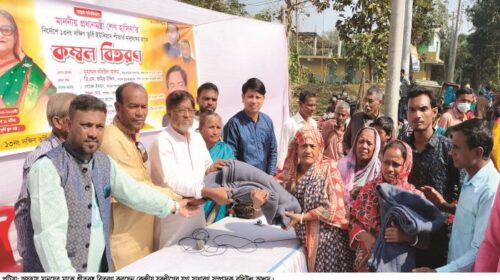Dhaka Bureau: In 1971, the budget of the newly independent Bangladesh was only 786 crore taka. That budget today has become 6 lakh 78 thousand 64 crores. The per capita income of the country that day was 129 dollars; today the per capita income is 2 thousand 814 US dollars. Time has passed, and Bangladesh has also progressed in keeping with the world.
Bangladesh was called a “bottomless basket” at the beginning of the journey, but now Bangladesh has surpassed Pakistan in almost all social and economic indicators.
Per capita income, infrastructure development, visible changes in the education and health sectors, private sector investment and an increase in domestic production, an increase in foreign trade, technological development, and consumption, production, and extraction of resources have all increased visibly.
After independence, Bangladesh started almost from zero, but after half a century of poverty and disaster, Bangladesh is now on the way to becoming a developing country. Bangladesh has progressed in every socio-economic index, including economic growth, health, education, empowerment of women, and increase in per capita income.
Especially in the midst of the ongoing global crisis, Bangladesh’s performance in managing foreign exchange reserves is better than that of Pakistan.
Economists say that in the last 50 years as an independent country, Bangladesh has left Pakistan behind in various fields of the economy. Not only that, Bangladesh has now become a role model for many countries. According to the data of the Central Banks of Bangladesh and Pakistan, Bangladesh is ahead of Pakistan in various fields, including per capita income, export earnings, and foreign exchange reserves. Bangladesh overtook Pakistan in per capita income five years ago. Bangladesh’s export earnings are 60 percent higher than Pakistan’s. Foreign exchange reserves are greater than six times a quarter. And where the inflation rate in Pakistan is 27 percent, the inflation rate in Bangladesh is around 9 percent. Bangladesh’s enviable success in the socio-economic field after independence is something to be proud of. Pakistan now envies Bangladesh for this progress.
In this context, the former governor of Bangladesh Bank, Atiur Rahman, said it was not right to compare Bangladesh with Pakistan. We can now compare with developing countries. He said, “After 50 years of independence, we can say that there has been a wonderful change in Bangladesh.”
Atiur Rahman thinks that such a great transition has been possible due to the able leadership of Bangabandhu Sheikh Mujibur Rahman. But if he had not been lost in 1975, the country would have gone further. He said that development activities have progressed again due to Bangabandhu’s daughter, Sheikh Hasina, coming to power.
According to Central Bank data, the average per capita income of the people of Bangladesh in the fiscal year 1972–73 was only Tk 580. Bangladesh surpassed Pakistan’s per capita income in the 2017–18 fiscal year. In that financial year, the per capita income of Pakistan was 1,459 dollars. In the same financial year, the per capita income of Bangladesh increased to 1,071 dollars. In the last financial year 2021–22, the per capita income increased to 2,073 dollars. After independence, the per capita income of Bangladesh increased by almost 30 times.
On the other hand, the data of the Pakistan Bureau of Statistics (PBS) say that the per capita income of the country in the fiscal year 2020–21 is 1,053 dollars.
Meanwhile, in the last fiscal year 2021–22, Bangladesh exported a record amount of goods and services totaling 5 thousand 208 million dollars, but Pakistan exported goods totaling 3 thousand 250 million dollars in the last fiscal year. That is, the export income of Bangladesh is now 60 percent higher than that of Pakistan.
According to the latest Bangladesh Bureau of Statistics (BBS) report, headline inflation in Bangladesh rose to 8.78 percent in February.
On the other hand, headline inflation in Pakistan was 27 percent in February. Inflation in rural areas of the country is 35 percent, compared with 23 percent in urban areas and 47 percent in rural areas.
At the end of February, Pakistan’s foreign exchange reserves decreased to 5.45 billion dollars. As per Bangladesh Bank’s latest estimate, our reserves amount to 3 billion dollars.
Bangladesh has to spend 106 rupees to buy one dollar. And the dollar price in Pakistan is 259 rupees. In the financial year 2021–22, Pakistan’s expatriate income has reached $3,120 billion is 259 rupees. In the financial year 2021–22, Pakistan’s expatriate income has reached $3,120 billion. And the expatriate income in Bangladesh is 2,103 million dollars.



















